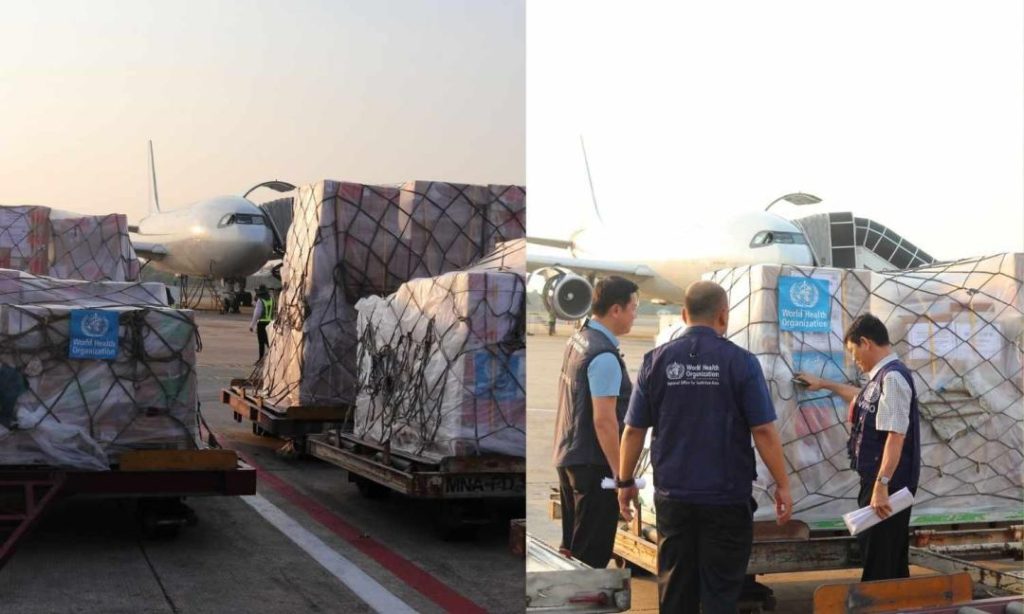
WHO Sends 100 Tons of Aid to Earthquake-Hit Myanmar
A devastating earthquake struck Myanmar on March 25, leaving a trail of destruction and chaos in its wake. The World Health Organization (WHO) has swiftly responded to the crisis, sending nearly 100 tons of medical supplies, tents, and equipment to support the affected population. As the nation grapples with the aftermath of the disaster, WHO is coordinating emergency medical teams and rapid response units to provide critical care to 12.9 million people.
The earthquake, which measured 6.8 on the Richter scale, has caused widespread damage to infrastructure, including hospitals and healthcare facilities. Many communities are now facing a heightened risk of disease outbreaks, particularly in the hardest-hit regions of Sagaing, Mandalay, and Nay Pyi Taw. In response, WHO is stepping up its support to ensure that affected individuals receive timely and effective medical care.
The agency’s efforts are focused on providing vital supplies, including medicines, surgical equipment, and emergency shelter materials. The 100 tons of aid dispatched by WHO includes:
- Essential medicines, such as antibiotics, painkillers, and antihistamines
- Surgical equipment, including sutures, gloves, and surgical instruments
- Emergency shelter materials, including tents, blankets, and sleeping mats
- Water purification tablets and other hygiene supplies
WHO is also deploying emergency medical teams to the affected areas, comprising doctors, nurses, and other healthcare professionals. These teams will work alongside local healthcare workers to provide critical medical care, including trauma surgery, emergency obstetric care, and mental health support.
In addition to the rapid response units, WHO is also working to strengthen the country’s health systems, particularly in the areas of surveillance, emergency preparedness, and response. This includes providing technical assistance to the Ministry of Health and Sports to enhance its capacity to respond to public health crises.
The agency is also supporting the Myanmar Red Cross Society in its efforts to distribute aid and provide humanitarian assistance to affected communities. This includes providing emergency food and non-food items, such as shelter materials, blankets, and cooking utensils.
The earthquake has left thousands of people injured, with many more displaced from their homes. The risk of disease outbreaks is particularly high in these settings, where people may be living in crowded and unsanitary conditions. WHO is working closely with the Myanmar government and other partners to monitor the situation and respond quickly to any emerging health threats.
Dr. Poonam Khetrapal Singh, WHO Regional Director for Southeast Asia, has emphasized the agency’s commitment to supporting Myanmar in this critical period. “The people of Myanmar are facing a significant humanitarian crisis, and WHO is working tirelessly to support their response. We are providing critical medical supplies, emergency shelter materials, and technical assistance to strengthen the country’s health systems. Our goal is to ensure that affected individuals receive the care they need to recover from this devastating disaster.”
In the coming weeks and months, WHO will continue to provide critical support to Myanmar, working closely with the government, partners, and affected communities to ensure that the response is effective and sustainable. As the situation evolves, the agency will continue to monitor the health needs of the affected population and adjust its response accordingly.



